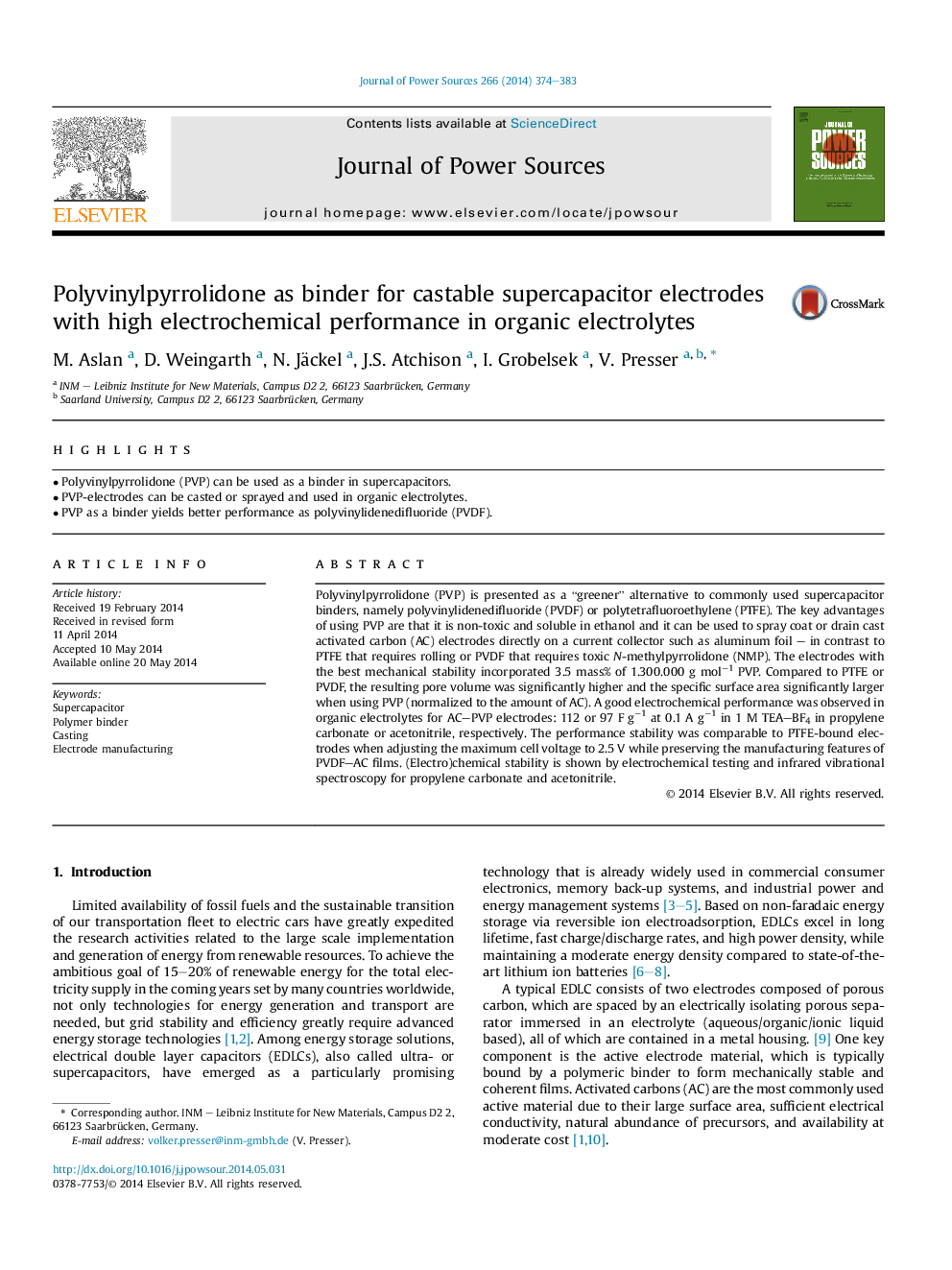| کد مقاله | کد نشریه | سال انتشار | مقاله انگلیسی | نسخه تمام متن |
|---|---|---|---|---|
| 1286776 | 1497966 | 2014 | 10 صفحه PDF | دانلود رایگان |

• Polyvinylpyrrolidone (PVP) can be used as a binder in supercapacitors.
• PVP-electrodes can be casted or sprayed and used in organic electrolytes.
• PVP as a binder yields better performance as polyvinylidenedifluoride (PVDF).
Polyvinylpyrrolidone (PVP) is presented as a “greener” alternative to commonly used supercapacitor binders, namely polyvinylidenedifluoride (PVDF) or polytetrafluoroethylene (PTFE). The key advantages of using PVP are that it is non-toxic and soluble in ethanol and it can be used to spray coat or drain cast activated carbon (AC) electrodes directly on a current collector such as aluminum foil – in contrast to PTFE that requires rolling or PVDF that requires toxic N-methylpyrrolidone (NMP). The electrodes with the best mechanical stability incorporated 3.5 mass% of 1.300.000 g mol−1 PVP. Compared to PTFE or PVDF, the resulting pore volume was significantly higher and the specific surface area significantly larger when using PVP (normalized to the amount of AC). A good electrochemical performance was observed in organic electrolytes for AC–PVP electrodes: 112 or 97 F g−1 at 0.1 A g−1 in 1 M TEA–BF4 in propylene carbonate or acetonitrile, respectively. The performance stability was comparable to PTFE-bound electrodes when adjusting the maximum cell voltage to 2.5 V while preserving the manufacturing features of PVDF–AC films. (Electro)chemical stability is shown by electrochemical testing and infrared vibrational spectroscopy for propylene carbonate and acetonitrile.
Journal: Journal of Power Sources - Volume 266, 15 November 2014, Pages 374–383